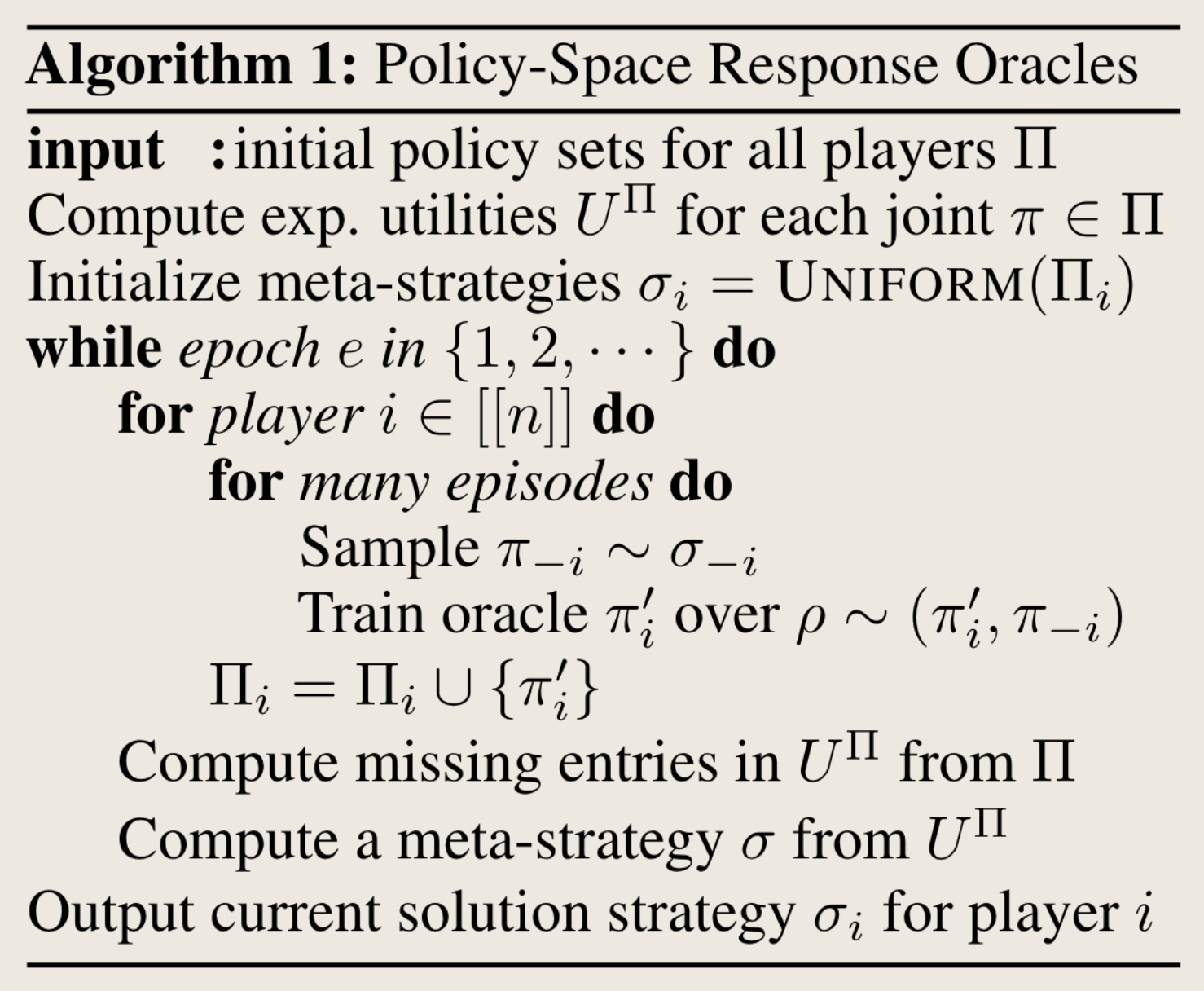PSRO: Policy-Space Response Oracles
Definition
Lanctot, Marc, et al. “A unified game-theoretic approach to multiagent reinforcement learning.” Advances in neural information processing systems 30 (2017).
- multi agents: me vs opponents
- joint action -> rewards + state transition; non-stationarity
- me vs which opponents?
- PSRO will answer this question.
- It provides a general framework, which generalizes independent learning, self-play, and fictitious-play
- self-play: $\sigma_{-i}=(0,0,\ldots,1,0)$, best response to the previous strategy of its own
- independent learning: $\sigma_{-i}=(0,0,\ldots,0,1)$
- fictitious-play: $\sigma_{-i}=(1/K,1/K,\ldots,1/K,0)$ where $K = \vert \Pi_{-i}^{T-1} \vert$
- Meta-strategy $\sigma$ specifies how to sample opponents’ strategies.
- Oracle
- It means the best response to the current population, which is a black box (my understanding)
- $\Pi_i$ is the set of best responses.
- Compute a meta-strategy $\sigma$. This step requires an approximation tool for an equilibrium solver.
- This algorithm is a equilibrium solver.
Alternative Description
Bighashdel, Ariyan, et al. “Policy space response oracles: A survey.” arXiv preprint arXiv:2403.02227 (2024).
The following part is taken from: Li, Wenhao, et al. “Verbalized Bayesian Persuasion.” arXiv preprint arXiv:2502.01587 (2025).
PSRO algorithms begin with an initial set of strategies for each agent and proceed through two alternating steps.
- First, a normal-form meta-game (e.g., matrix game) is constructed, where each agent selects a meta-strategy to represent their overall behavior in the game.
- A meta-solver (e.g., Nash equilibrium solver) then computes a solution (e.g., Nash equilibrium) for this meta-game.
- In the second step, each agent computes an approximate best response to the meta-strategy, aiming to improve their reward assuming the other agents play according to the meta-strategy.
- This process repeats until no agent can benefit by deviating from their strategies
My understanding:
- If the meta-solver is accurate, then the two steps will only execute once.
- Normally we use projected replicator dynamics as a meta-solver.
This post is licensed under CC BY 4.0 by the author.
